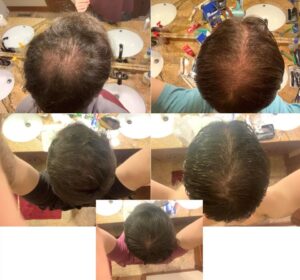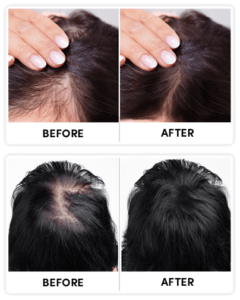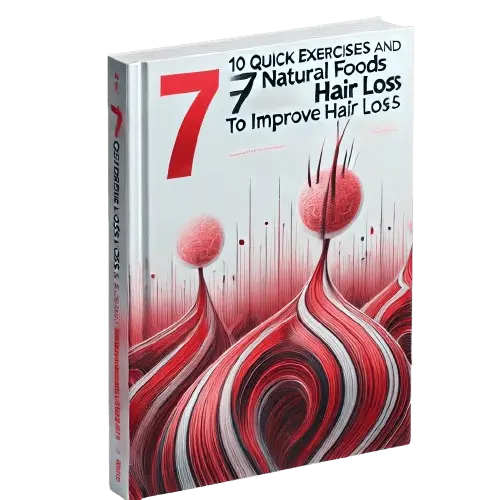Hormonal Influences: How Does Your Hair Change During Your Menstrual Cycle?

Getting to Know How Hormones Affect Your Hair
Ever wondered why your hair seems to act differently at various times of the month? Well, it’s all about the hormones! These chemical messengers in our bodies play a huge role in all sorts of processes, including how our hair looks and feels. During the menstrual cycle, hormone levels go up and down, which can lead to noticeable changes in hair texture, growth, and overall condition. By digging into the details of how hormones influence our hair, we can better predict and manage these changes.
A Quick Look at Menstrual Cycle Hormones
Four main hormones run the show during the menstrual cycle: estrogen, progesterone, luteinizing hormone (LH), and follicle-stimulating hormone (FSH). As these hormones ebb and flow through each phase of the cycle, they not only guide reproductive processes but also affect other things like mood, skin, and—of course—hair. Getting a handle on this hormonal dance is key to understanding why your hair might be doing what it's doing throughout the month.
Hormones and Hair Health: What's the Connection?
There's plenty of evidence linking hormones to hair health. Take estrogen, for example—it’s known to support hair growth and maintain its fullness. Meanwhile, fluctuations in progesterone and other hormones can lead to hair shedding or changes in texture. Aligning your hair care routine with these hormonal changes can help keep your locks looking their best during each phase of the menstrual cycle.
The Menstrual Phase: Hair's Up and Downs
The menstrual phase kicks off the cycle, with estrogen and progesterone levels at their lowest. During this time, you might find your hair feels a bit dull or is shedding more than usual. While this phase can be tough on your hair, understanding the hormonal influences at play can help you manage these changes more effectively.
Hormonal Dips and Hair Impact
When estrogen and progesterone take a nosedive, hair can become drier and more brittle due to reduced sebum production. This lack of hydration can temporarily slow down hair growth, leading to increased shedding for some.
Common Hair Woes During Your Period
Dryness, more shedding, and a lack of shine are pretty common hair issues during menstruation. The drop in hormones can also make your hair feel more tangled and harder to manage. But don’t worry—these issues are usually short-lived and get better as hormone levels rise in the next phase.
Top Trichologist: Do This To Your Scalp To Regrow A Full Head Of Hair

Completely natural and dirt cheap way that makes it possible for you to finally regrow all your hair back.
Watch nowTips for Keeping Your Hair Happy
To tackle hair dryness during this phase, try using hydrating hair masks or leave-in conditioners. A gentle scalp massage can boost circulation and improve sebum distribution. Avoiding heat styling and going for protective hairstyles can also help reduce stress on your hair and prevent breakage.
The Follicular Phase: Time for Growth and Strength
After menstruation comes the follicular phase, when estrogen levels start climbing. This is the time when your hair is primed for growth and strength, offering a great chance to nurture and improve its health. With the right care, you can see noticeable improvements in texture and thickness.
Estrogen's Role in Hair Growth
Estrogen is a powerhouse when it comes to promoting hair growth, as it extends the anagen (growth) phase of the hair cycle. With more estrogen, hair follicles get better access to nutrients and oxygen, supporting robust growth and reducing hair loss. This hormone also helps keep hair shiny and full, giving it a vibrant appearance.
How to Care for Your Hair in the Follicular Phase
During the follicular phase, focus on nourishing your hair with protein-rich conditioners and treatments to strengthen strands and enhance elasticity. Eating a balanced diet rich in vitamins and minerals, especially iron and zinc, will further support hair health and growth during this time.
The Ovulatory Phase: Hair at Its Best
The ovulatory phase is like the grand finale of hormonal activity, with a surge in estrogen and LH. Many women notice their hair looking its best during this phase, thanks to the ideal hormonal environment. It’s a perfect time to try out new hairstyles and products, as your hair is more resilient and easy to manage.
Hormonal Highs and Hair Benefits
When hormones peak during ovulation, hair quality often sees a boost. Increased estrogen not only encourages hair growth but also enhances texture and shine. Many people find their hair is easier to style, with less frizz and more volume.
Why The Ancient Samurai Warriors Never Lost Their Hair…

guaranteed to work for any men or women out there...
Learn moreKeeping Hair Healthy During Ovulation
To keep your hair in top condition during ovulation, continue using moisturizing and strengthening products. This is also a good time to use a clarifying shampoo to get rid of any product build-up, so your hair can fully benefit from treatments and nutrients.
Best Hair Care Practices
Stick to gentle styling techniques during this phase. Using heat protectants and limiting hot tools can help preserve hair health. Regular trims can also keep split ends at bay and maintain your hair’s overall appearance.
The Luteal Phase: Getting Ready for Changes
As the luteal phase kicks in, hormones, especially progesterone, start to rise. This phase preps the body for a possible pregnancy and can bring about changes in hair health. Knowing what to expect can help you tweak your hair care routine accordingly.
How Progesterone Affects Hair
While progesterone is crucial for reproductive health, it can sometimes have less-than-ideal effects on hair. Some women notice their hair becomes oilier or their scalp more sensitive during this phase. Progesterone can also slightly shorten the hair growth cycle, leading to more shedding for some.
Hair Challenges in the Luteal Phase
Common hair issues during the luteal phase include increased oil production, which can make hair look greasy or flat. Some might also experience itchiness or discomfort on the scalp, making hair care a bit tricky.
Tackling Hair Concerns Head-On
To handle hair issues during the luteal phase, try using a gentle, sulfate-free shampoo to manage oiliness without stripping the scalp of essential moisture. Scalp treatments with soothing ingredients like tea tree oil can help alleviate itchiness or irritation.
Watch Your Hair Come Back FASTER Than You EVER Dreamed Possible

WITHOUT Expensive Medications, Lasers, or Painful Surgeries!
Watch nowThe Role of Lifestyle and Diet in Hair Health
While hormones are key players in hair health, lifestyle and diet matter just as much. Eating a well-balanced diet rich in essential nutrients can support hair health throughout the menstrual cycle. Plus, lifestyle factors like stress and sleep quality can also impact your hair’s condition.
Nutritional Must-Haves for Healthy Hair
Focus on a diet packed with vitamins A, C, D, and E, along with biotin and omega-3 fatty acids. These nutrients are vital for keeping hair follicles healthy and promoting growth. Staying hydrated by drinking plenty of water is also crucial for keeping hair resilient.
How Lifestyle Affects Hair During Your Cycle
Stress can make hair problems worse, leading to more shedding or dullness. Adding stress-busting activities like yoga or meditation to your routine can boost both your mood and your hair. Getting enough sleep and regular physical activity are also key to maintaining healthy hair.
Top Tips for Great Hair All Month Long
If you’re looking for expert advice, consider seeing a dermatologist or trichologist who can provide personalized recommendations based on your hair type and hormonal profile. Tailoring your hair care routine to align with your menstrual cycle can help keep your hair looking its best.
Product Picks for Each Phase
During the menstrual phase, go for hydrating and nourishing products. In the follicular and ovulatory phases, focus on strengthening treatments. As the luteal phase approaches, look for products that balance oil and soothe the scalp.
Pro Hair Care Advice
A professional stylist can offer tips on the best hairstyles and cuts that suit your hair’s natural cycle. Regular trims, protective styles, and treatments can prevent damage and enhance your hair’s natural beauty.
Dealing with Specific Hair Issues
If you’re facing persistent hair problems like excessive shedding or scalp discomfort, it’s wise to consult a healthcare professional. They can help pinpoint underlying causes and suggest effective treatments or lifestyle changes.
Wrapping Up: Embrace Your Hair's Changes
By understanding how hormones affect your hair throughout the menstrual cycle, you can adjust your hair care routine to meet your hair's changing needs. Keeping track of these changes and responding with tailored care strategies not only boosts hair health but also empowers you to embrace each phase with confidence. Remember, your hair is an ever-evolving part of you, and with a little care, you can keep it looking and feeling fabulous all the time.






